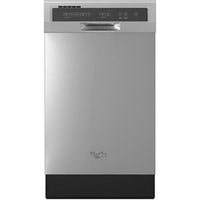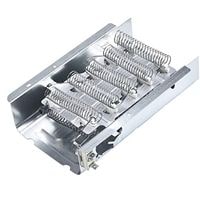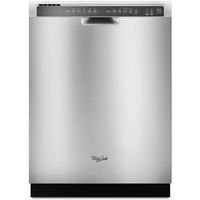Whirlpool dishwasher not drying. Having a dishwasher in the kitchen is all about convenience and ease. Dishes go in dirty, get cleaned and then come out squeaky clean without any extra steps.
If you’re dealing with a Whirlpool dishwasher that has an issue drying all the way, washing dishes by hand every night can seem like an endless chore.
Thankfully this blog will show you what to do if your dishwasher isn’t drying dishes properly so that hopefully you can finally say goodbye to hand-drying dishes for good.
Whirlpool dishwasher not drying

If a dishwasher isn’t drying dishes thoroughly enough, you may need to increase the temperature of your water.
Running hot water in your sink before starting a dishwasher cycle should make hot water readily accessible. Make sure that your home’s hot water supply is hotter than 120℉ by keeping your heater set at least at that temperature.
Defective Heating Element
Some dishwashers use a heating element to heat the water during the drying cycle and if this electrical component fails, the heated water can no longer pass through the dishwasher effectively.
The result is that it takes much longer for your dishes to be done spinning and made presentable for your use. To solve this problem, test the heating element for continuity with a multimeter to see if it’s functioning properly. If not, remove it and replace it.
Faulty Heating Element Assembly

If your dishwasher isn’t drying dishes properly, it could be due to a failure in the heating element assembly.
You can check this by using a multimeter to test whether or not the heating element is working correctly as follows.
Run the dishwasher as normal without any dishes inside and confirm it’s still heating up if it’s not, then your problem is most likely due to a faulty heating element assembly.
To resolve the issue simply replace the failed part and you should find that all is well again.
Vents may not be opening properly
Vents might not be opening properly. During the rinse cycle, many dishwashers need to open a vent while your dishes are drying. The dishwasher may leave moisture on your dishes if the vent does not open properly.
Check carefully to ensure the vent opens fully and is always in contact with hot steamy water so that it can continue to function effectively.
A fan motor has burned out
Some dishwashers often use a motorized fan as well to aid in drying the dishes. If the motor isn’t working, it might be because the motor has burned out or you need to clean out a clog if the issue was due to excess debris in between the blades.
To test it for continuity and make sure it would spin effectively; try spinning the blades yourself by hand or disconnecting it from its power source after turning off the machine so that you can determine what’s wrong with the fan motor before you attempt replacing it to see whether or not this will solve your problem.
Rinse aid not being used
Of the many reasons your Whirlpool dishwasher may not be drying completely, a lack of rinse aid is one that should be looked into.
Rinse aid is advertised in commercials as something to make your dishes shine more, but it’s actually an important ingredient for ensuring clean dishes dry off completely.
When you add rinse aid, it decreases the surface tension of water, making it possible for water to evaporate quicker and leave your dishes completely dry every time you run a cycle.
Don’t use the heated dry setting
Select a dishwasher cycle, like “Heated Dry”, or one of a similar setup. The point of these cycles is to dry your dishes for you after the washing cycle is finished; much like the point of heated dry on clothes when there is still some moisture.
One common reason why your dishwasher may fail at drying at all could be due to a part failure; it’s possible that your part has blown out and is no longer able to do its job.
Plastic Items to Be Washed
There may be a reason for a Whirlpool dishwasher not drying dishes if the dishes are made of a particular material. Ceramic and metal retain heat well and dry faster than plastic.
Further, too many plastic items in a dishwasher cycle can lower the temperature during the drying process, making it more difficult to remove excess moisture.
Related Guide
